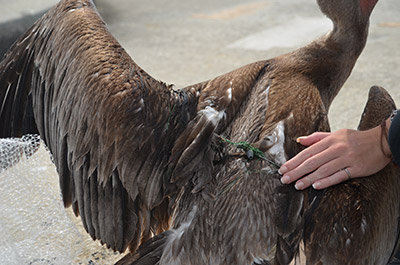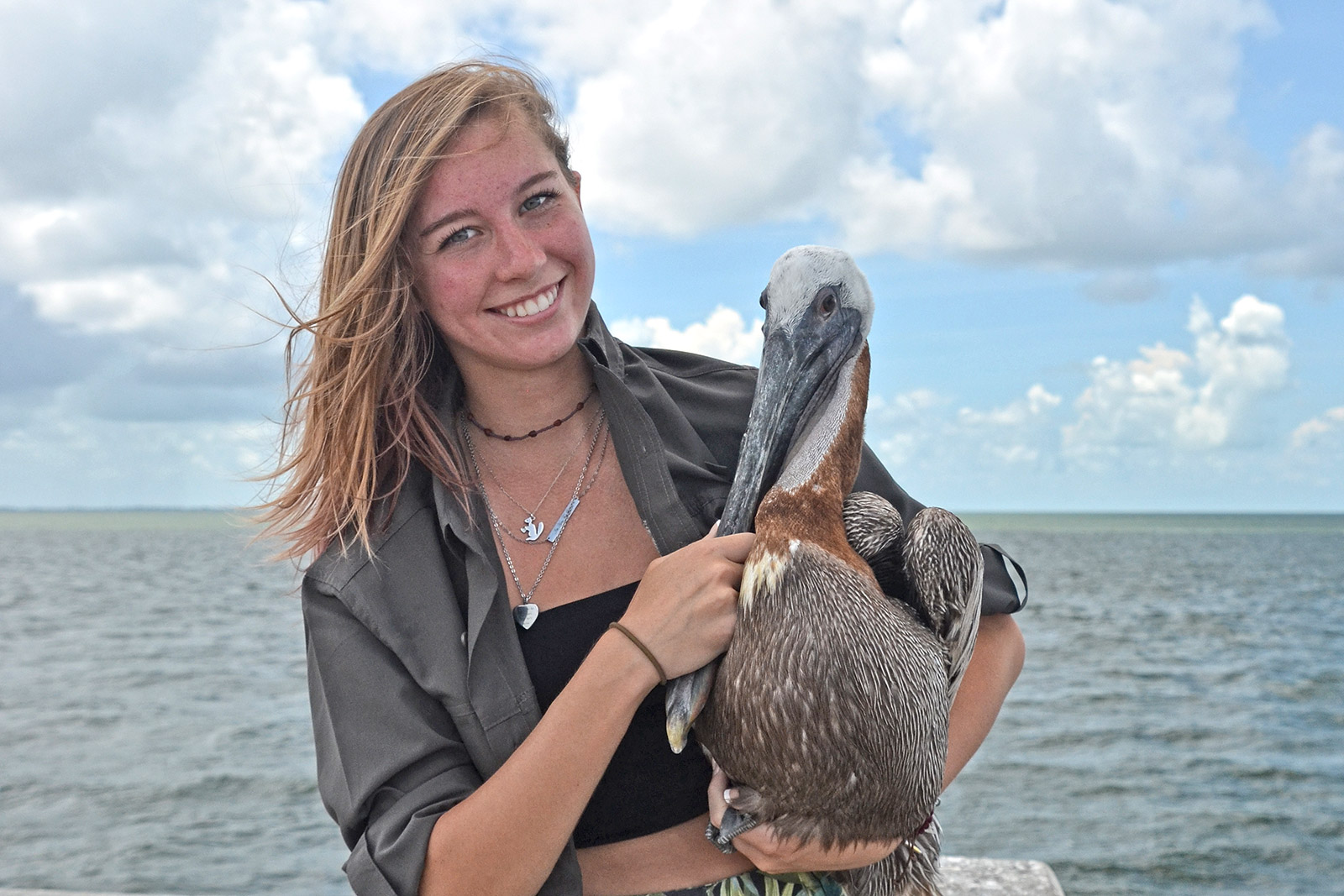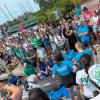The hypothesis was that anglers interacting with brown pelicans led to entanglements that often injured or killed the birds. Four years of research and one publication later, Fairl Thomas ’22 and Eckerd College Professor of Environmental Science and Biology Beth Forys, Ph.D., know that’s not the whole truth.
“The Role of Fishing Piers in Brown Pelican (Pelecanus occidentalis) Entanglement”—published Sept. 8 in Animals, an international, peer-reviewed, open-access journal devoted entirely to animals—identified pier design as the likely culprit in nearly 7% of brown pelican entanglements that happen annually.
“The fishermen didn’t really want to interact with the birds,” says Thomas, who completed this research before graduating from Eckerd last May. “When we surveyed them and observed the interactions, we found that the highest incidences of entanglement in Tampa Bay happened at piers that had perches built nearby.”
It may be those ringside seats to the fishing action that lure brown pelicans to fly under piers, Forys explains. The paper suggests removing perch areas or having a no-fishing zone on piers with high entanglement rates as a possible solution to a deadly problem. Fort De Soto Park already limits pier access for anglers to certain times of the year. If that produces a reduction in entanglements, the research will be further validated—-an extraordinary résumé point for a recent college graduate.

A juvenile brown pelican tangled in braided line; the entanglement was so tight that it caused lacerations on the elbow of the left wing. It was later released after a full recovery. Photo credit: Terrie Dahl Thomas
“Getting published as an undergrad is very rare for undergraduates,” Forys says. “It is pretty rare. Only a third of master’s theses get published. Fairl did this as a thesis on her off time.”
Thomas, who now works as a ranger at Homosassa Springs State Park, credits the College with encouraging her passions and supporting her academic journey.
The Safety Harbor, Florida, native interned at the Seabird Sanctuary, founded the Save Our Seabirds Club on campus and worked on the brown pelican research with the help of Forys and a $2,500 grant from St. Petersburg and Tampa Audubon Societies. In her senior year, a Wildlife Rehabilitation course with Visiting Professor of Biology and veterinarian Ray Ball took her on a field trip to Homosassa Springs State Park, where she met her current supervisor.
“I know it’s in that book Colleges That Change Lives, but Eckerd really does change lives,” Thomas admits. “Getting involved in bird research my freshman year changed my path and led me to my dream job.”
Among her responsibilities at the park are acting as caretaker and keeper to a captive animal population that includes Florida panthers, birds of prey, black bears and 62-year-old Lou, the world’s oldest hippo.
Forys says being a published researcher is a product of Thomas’s commitment prior to and after graduation. She had weekly meetings with Thomas for six months to complete a draft, and Thomas also went as far as to share her work with other faculty across disciplines—including her Nonprofit Management instructor, Professor of Management Frank Hamilton, Ph.D., and Associate Professor of Environmental Studies Hilary Flower, Ph.D.
“Students ask me about what you need to do to take these opportunities, and I tell them to bond with faculty,” Thomas says. “I shared my work with Professor Flower and Professor Hamiltion, and they helped me.”













